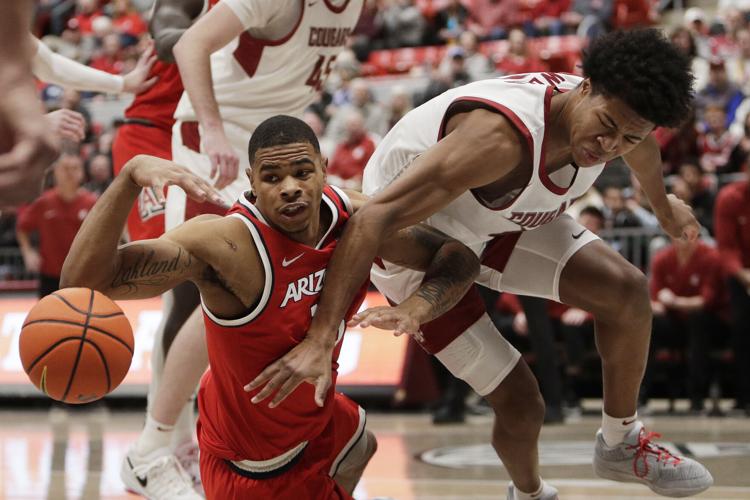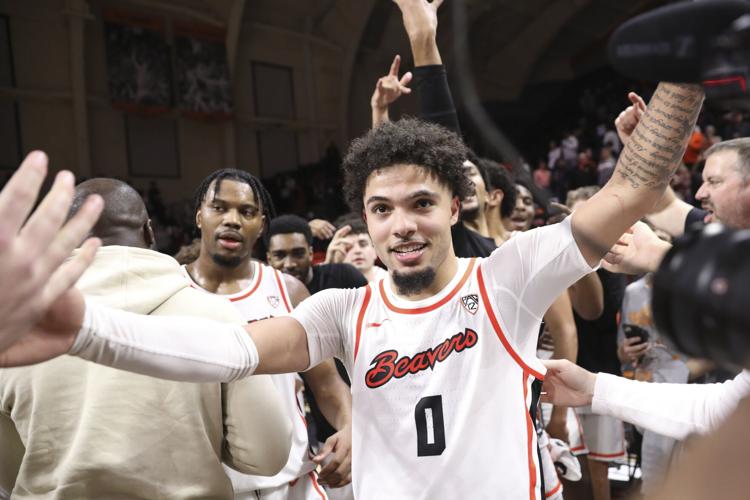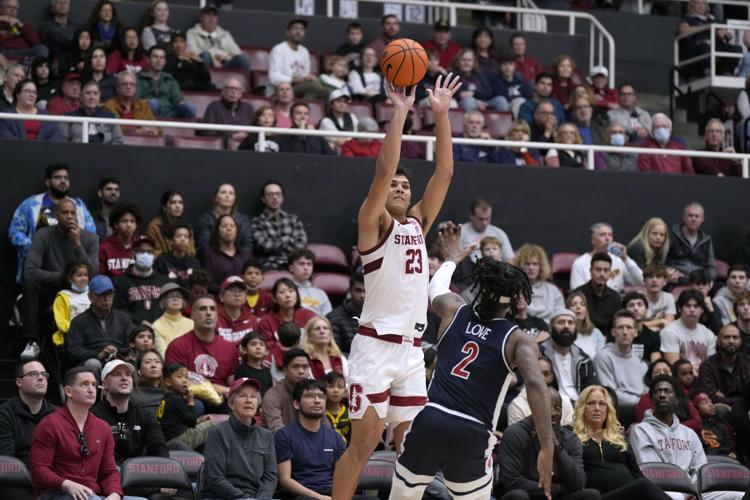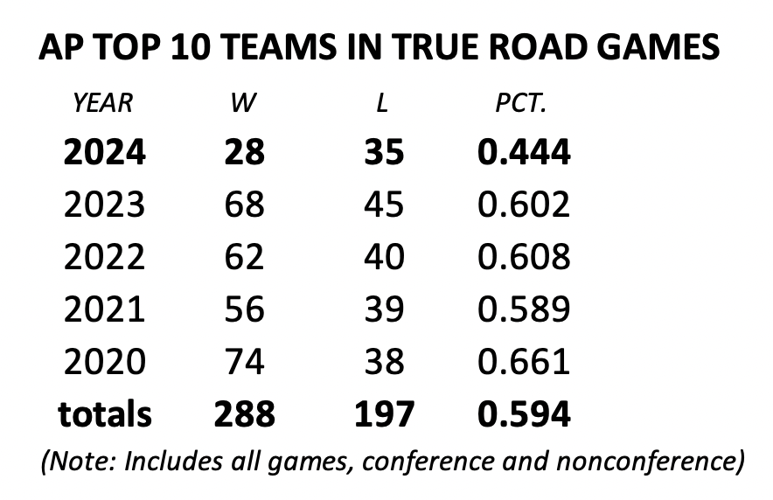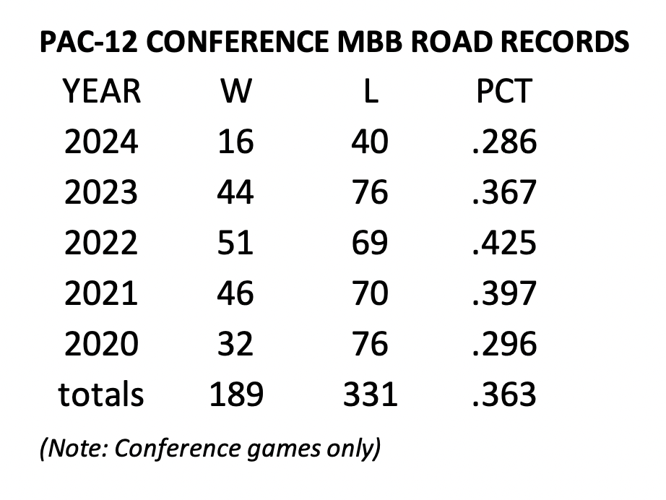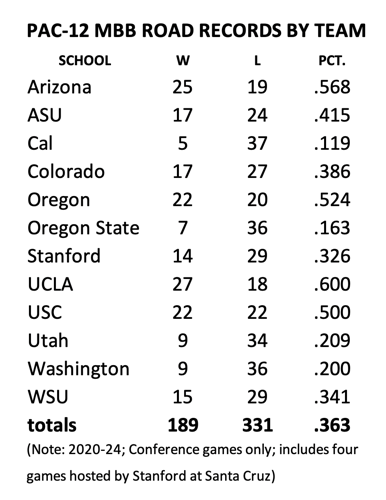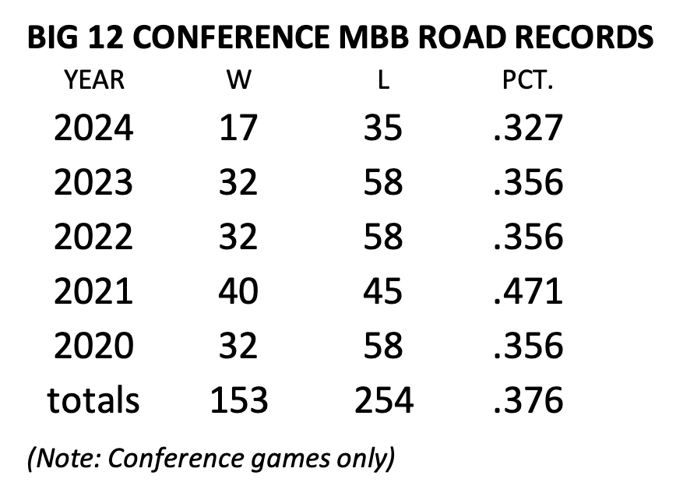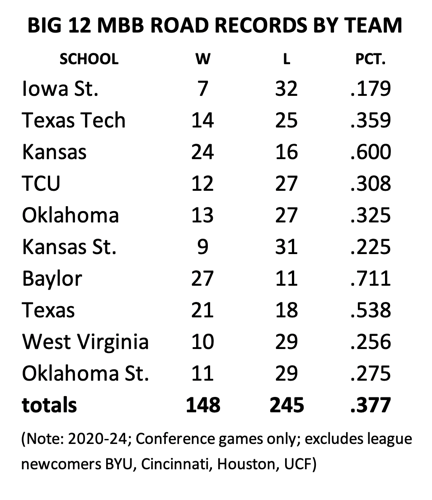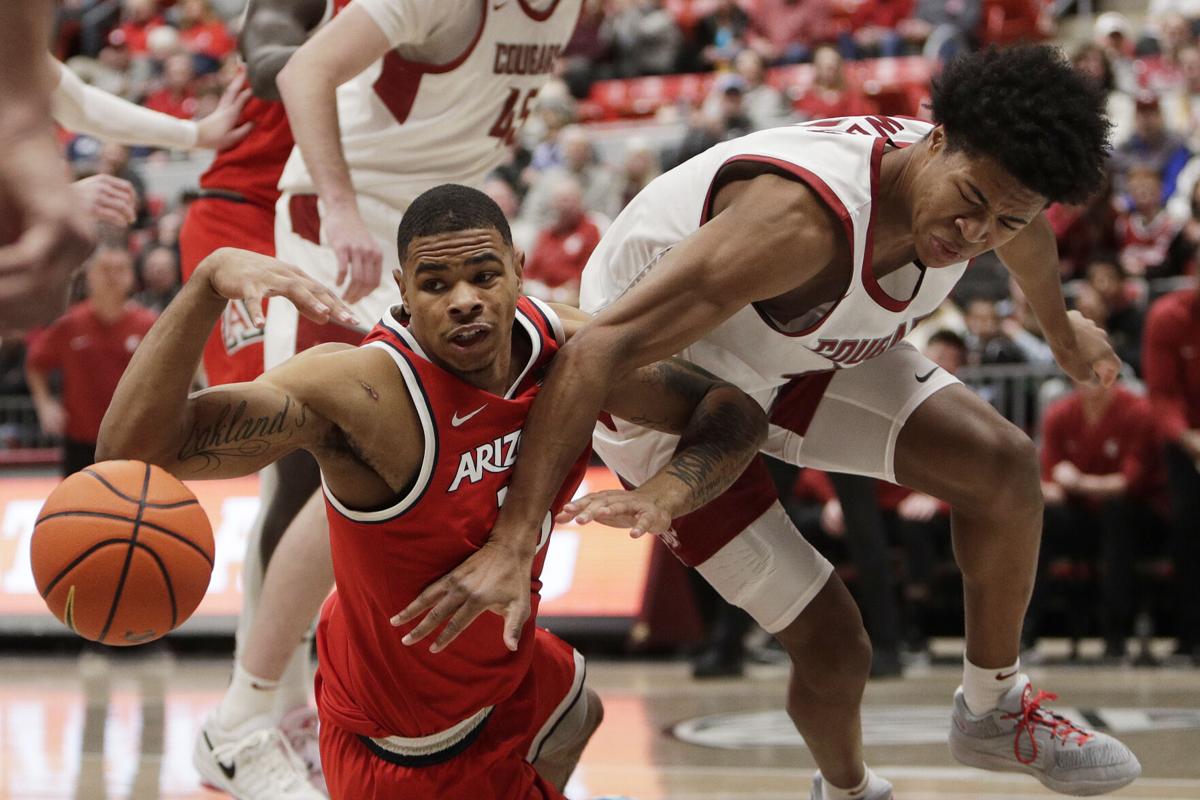Is Arizona a bad road team?
Despite the results so far — and how they make you feel about Tommy Lloyd’s squad — the Wildcats might actually be a pretty good one. Or at least an above-average one.

Michael Lev
Arizona, which hosts Cal on Thursday night, is 3-3 in true road games. Teams ranked in the Associated Press Top 10 — where the UA has lived for most of the season — were 28-35 entering Wednesday’s games. Their winning percentage in those games — .444 — is significantly lower than recent seasons.
Why is that? Lloyd has theories. They all point to one place: parity.
“First off, our team, we don't ever want to lower our standards,” Lloyd said Wednesday. “We expect to win on the road, bottom line. That's our responsibility, to go out and win on the road. We know it's incredibly challenging.
“I think some of the reasons are, you're still seeing the effect of COVID with these players getting extra eligibility. ... So there's more experienced players in the player pool. And these players are getting dispersed and distributed across other teams. You can't load up. ... That's, to me, the most significant reason.

“And then with the transfer portal and kids being instantly eligible or transfer twice and get eligible ... teams now have more experience, have more depth, have more talent across the board. And there's been a trickle-down effect to some of the other programs that maybe wasn't there pre-COVID.
“I don't have any data other than my eyes that are telling me that. But that would be the major cause.”
Good news, Coach: We have data. And it indicates that winning on the road is harder than it’s been in a long time.
Remember that stat for Top 10 teams? Let’s put it into some context.
Over the previous four seasons, Top 10 teams had a road winning percentage of .616. The lowest mark in any one season was .589.
Maybe the current figure will regress to what the norm has been. Or maybe Lloyd’s eyes haven’t deceived him. Maybe — with NIL and the transfer portal leveling the court to some degree — it isn’t as easy for powerhouse programs to pulverize purportedly inferior opponents in their home gyms.

Oregon State guard Jordan Pope, center, celebrates his game-winning 3-point basket against Arizona on Jan. 25 in Corvallis, Oregon. The Beavers won 83-80.

Arizona is 2-3 in Pac-12 road games. No Pac-12 team is above .500 on the road this season. Collectively, they’re 16-40 for a winning percentage of .286 — the lowest in the last five years.
UCLA has the most wins (three) in Pac-12 road games so far. The Bruins also have the best road winning percentage (.600) in Pac-12 play over the past five seasons.
Pains me to admit it, because Mick Cronin is such a sourpuss, but he wasn’t lying when he said this to our Justin Spears about McKale Center:
“Venue and fans are irrelevant to me. That’s why my teams have always been so good on the road.”
Only four teams have records of .500 or better in Pac-12 road games since 2019-20: UCLA, Arizona (.568), Oregon (.524) and USC (.500). ASU (.415) is the only other team that’s above .400.
What stings about the Wildcats’ road losses this season is that they all came against unranked teams. Of course, that label applies to every Pac-12 team not named Arizona.

Stanford forward Brandon Angel (23) takes a 3-point shot over Arizona guard Caleb Love (2) during the second half of their game Dec. 31, 2023, in Stanford, California. The Cardinal shot 64% from beyond the arc en route to upsetting the Wildcats.

Stanford, Washington State and Oregon State are ranked 92nd, 44th and 147th, respectively, in the latest KenPom ratings. Here’s the thing about all three, though: They’re way better this year than last year.
Stanford has gone from 14-19 to 10-9, WSU from 17-17 to 15-6 and OSU from 11-21 to 11-9. They’re tough outs. Or at least tougher outs.
Cal has made an even bigger jump. The Golden Bears were one of the worst teams in the country last year — 3-29 overall, 2-18 in the Pac-12. They’re currently 8-12, 4-5 — and 4-2 since starting Pac play with three straight losses.
The Wildcats just so happened to jump on them early in a 100-81 blowout in Berkeley on Dec. 29. Arizona lost two days later on The Farm, where Stanford shot an absurd 64% from 3-point range. OSU shot 60% from 3 in last week’s upset. No other team has shot even 50% from beyond the arc against the Wildcats.

Bad road team? Or just bad luck?
OK, now that you’re sufficiently riled up, let me tell you about the Big 12, aka the New World. You think it’s hard to win on the road in the Pac-12? Wait till Arizona joins the Big 12 next season.
In league games on the road, Big 12 teams have posted a winning percentage of .356 or lower in four of the past five seasons — including .327 in 2023-24.
Big 12 road teams went 40-45 (.471) in 2020-21, but I have a theory about that. That was the post-pandemic year, when arena capacities were limited. The highest average attendance in the league that season was 3,916 at Texas Tech, where the capacity at United Supermarkets Arena is 15,098. This year, the lowest average attendance in the Big 12 is 6,119 at TCU — whose capacity is 6,800.
The lowest attendance as a percentage of capacity in the Big 12 this season is 46% (Oklahoma State). Four Pac-12 teams are at 40.2% or lower.
Perhaps playing in packed houses will help the Wildcats, who have struggled at times to generate energy when it’s lacking in the building. Recent Big 12 history suggests otherwise.

Iowa State forward Tre King yells out as he heads to the locker room while fans rush the court following a 79-75 win over then-No. 7 Kansas on Jan. 27 in Ames, Iowa.

No Big 12 team is above .500 in conference road games this season. (Five are 2-2.) Only three are above .500 over the past five seasons: Baylor (.711), Kansas (.600) and Texas (.538).
But it’s getting harder for them too. Baylor is 6-6 the past two seasons after going 21-5 the previous three. Since going 9-0 in 2019-20 in Big 12 road games, Kansas is 15-16. Texas is 10-12 the past three seasons; it was 11-6 the previous two.
In 2022-23, only two Big 12 teams, Baylor and Kansas, finished with above-.500 road records in league play — and both were just 5-4.
The Big 12 is expected to go to a 20-game league schedule next year, when the conference expands to 16 teams; each team would play five opponents twice and the other 10 once.
So if you take Arizona’s .568 road winning percentage in the Pac-12 over the past five seasons and apply it to a 10-game Big 12 road schedule, that would put the Wildcats in the five- to six-win range. Maybe we round down because the Big 12 is a bit tougher and the trips are a tad longer.
Would you be good with Arizona going 5-5 in league road games if the Wildcats held serve, for the most part, at home?
I agree with Lloyd: Arizona shouldn’t lower its standards. But with the Big 12 era dawning, it might be time to adjust expectations.
The Wildcats aren’t going to roll through Lawrence, Lubbock and Houston without hitting some bumps. If they lose some games along the way, it won’t be the end of the world. It’ll just be the reality of the new one.
VIDEO: Arizona men's basketball coach Tommy Lloyd speaks to assembled media about why winning on the road has become more difficult not just at Arizona or in the Pac-12, but across college basketball as a whole. Lloyd spoke on Wednesday, Jan. 31, 2024 at McKale Center ahead of the Wildcats home matchup with Cal. (Courtesy Arizona Athletics)


